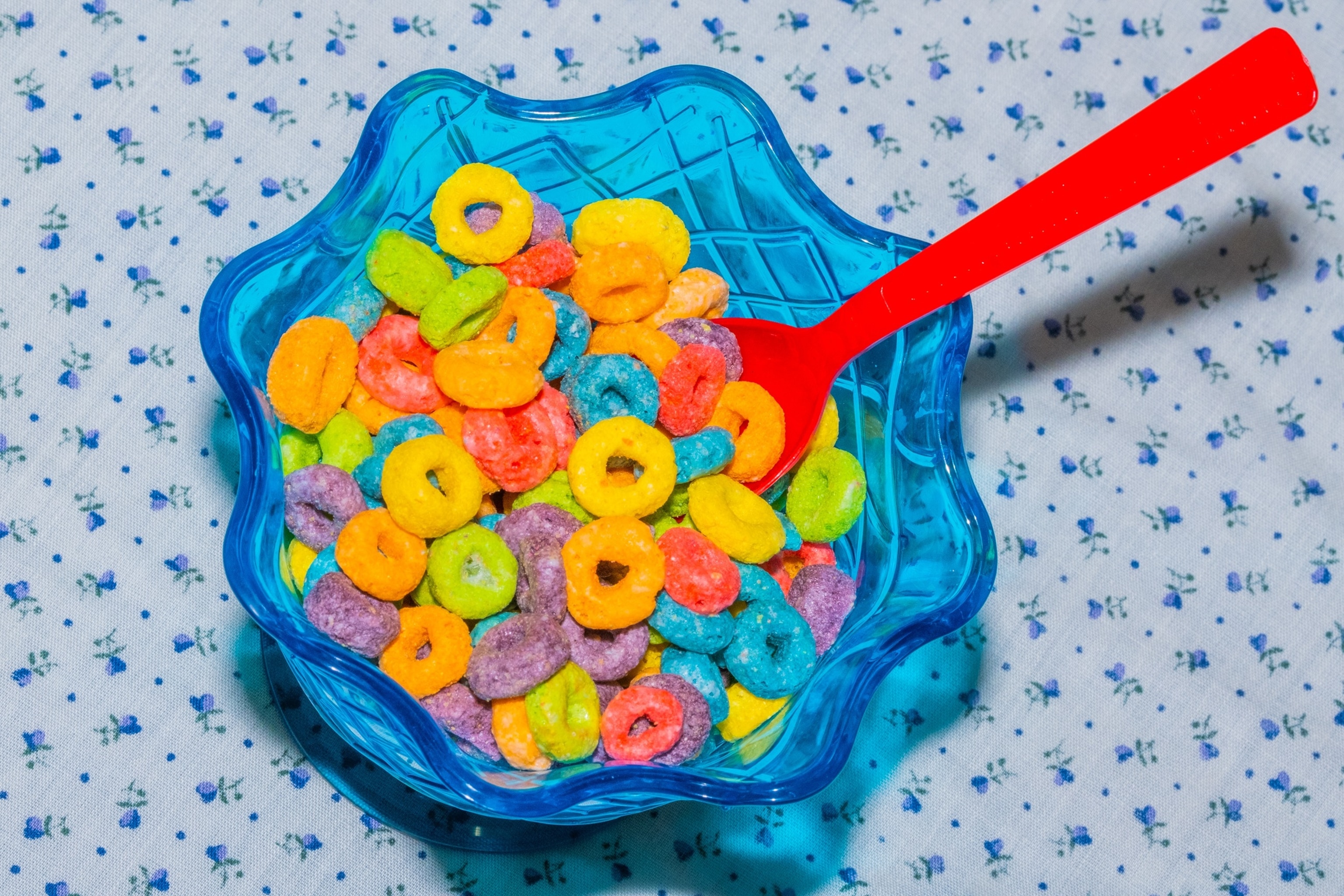A landmark bill to ban some dyes in food served at California public schools, aimed at protecting children’s health, is headed to Gov. Gavin Newsom’s desk to be signed into law after passing the state legislature on Thursday.
Assembly Bill 2316, also known as the California School Food Safety Act, would prohibit six potentially harmful food dye chemicals from being provided in the state’s public schools. It was approved by the California Assembly on Thursday after passing the state Senate earlier in the week.

The outdoor cafeteria at Bathgate Elementary School in Mission Viejo, California on Oct. 2, 2019.
Philip Cheung/The Washington Post via Getty Images, FILE
“California has a responsibility to protect our students from chemicals that harm children and that can interfere with their ability to learn,” Assemblymember Jesse Gabriel, who introduced the legislation back in February, said in a statement Thursday, adding, “This bill will empower schools to better protect the health and well-being of our kids and encourage manufacturers to stop using these harmful additives.”
Gabriel was previously successful in his efforts to ban potentially harmful food and drink additives in products sold throughout the state through the passage of the California Food Safety Act last year. The legislation bans potassium bromate, propylparaben, brominated vegetable oil and Red 3 from food that is manufactured, delivered and sold in the Golden State.
Newsom signed the bill into law last October, making California the first state in the U.S. to ban the additives.
Editor’s Picks
Under the newly passed California School Food Safety Act, Red Dye No. 40, Yellow Dye No. 5, Yellow Dye No. 6, Blue Dye No. 1, Blue Dye No. 2 and Green Dye No. 3 will be banned from food served to students in public schools during regular hours.
The bipartisan bill was supported by the Environmental Working Group and Consumer Reports.

A bowl of Froot Loops cereal, sold in the US and made with artificial dyes, arranged in the Brooklyn, May 22, 2024. The two companies formed after Kellogg Co. split last year are now facing new regulations on the use of artificial food dyes, leaving them to chart their own courses in a controversial area for highly processed foods, especially those designed for kids.
Lucia Buricelli/Bloomberg via Getty Images
Studies suggest that consumption of the six dyes and colorants banned under A.B. 2316 may be linked to hyperactivity and other neurobehavioral problems in some children, as the California Environmental Protection Agency’s Office of Environmental Health Hazard Assessment outlined in a 2021 report.
While there are still thousands of chemicals allowed for use in our country’s commercial food system, many of those that have been reviewed by the Food and Drug Administration have not been reevaluated for decades. Red 40, for example, was last evaluated for health risks in 1971.
Reports from the American Academy of Pediatrics align with this push to reassess the safety of artificial food coloring.
“Over the last several decades, studies have raised concerns regarding the effect of [artificial food colorings] on child behavior and their role in exacerbating attention-deficit/hyperactivity disorder symptoms,” doctors write. “Further work is needed to better understand the implications of AFC exposure and resolve the uncertainties across the scientific evidence. The available literature should be interpreted with caution because of the absence of information about the ingredients for a number of reasons, including patent protection.”
Dr. Stephanie Widmer, an ABC News medical contributor, board-certified emergency medicine physician and toxicologist, told “Good Morning America” previously, while discussing California’s earlier harmful chemical ban, “These chemicals are all kind of in different foods and all exert different effects and different concerns.”
“Some of them are associated with neurological problems, some are reproductive problems, some have been linked to cancer,” Widmer said at the time. “It really depends on the substance.”
California schools are taking a groundbreaking step in promoting the health and well-being of their students by implementing a landmark bill that bans certain food dyes. The bill, known as SB 504, was signed into law by Governor Gavin Newsom earlier this year and aims to reduce the consumption of potentially harmful additives in school meals.
Food dyes, also known as artificial colors, are commonly added to processed foods and beverages to enhance their appearance and appeal. However, research has shown that some of these additives may have negative effects on children’s behavior and health. Studies have linked certain food dyes to hyperactivity, attention deficit disorder, and other behavioral issues in children.
By banning the use of specific food dyes in school meals, California schools are taking a proactive approach to protecting the health of their students. The bill prohibits the use of synthetic food dyes such as Red 40, Yellow 5, and Blue 1 in any food or beverage served on school grounds. This includes not only cafeteria meals but also snacks, drinks, and items sold in vending machines.
The implementation of this bill is a significant step towards creating a healthier school environment for students. By eliminating potentially harmful additives from school meals, California schools are helping to promote better nutrition and overall well-being among their student population. This move aligns with the state’s broader efforts to improve the quality of school meals and promote healthy eating habits.
In addition to the health benefits, the ban on certain food dyes may also have positive effects on students’ behavior and academic performance. By reducing the consumption of additives that have been linked to behavioral issues, schools may see improvements in students’ focus, attention span, and overall classroom performance.
While some critics argue that the ban on food dyes may limit food options and increase costs for schools, supporters believe that the potential health benefits outweigh any drawbacks. By prioritizing the well-being of students, California schools are setting a positive example for other states to follow.
Overall, the implementation of SB 504 represents a significant milestone in the ongoing efforts to improve school nutrition and create healthier environments for students. By taking a stand against potentially harmful additives in school meals, California schools are demonstrating their commitment to promoting the health and well-being of their students.



